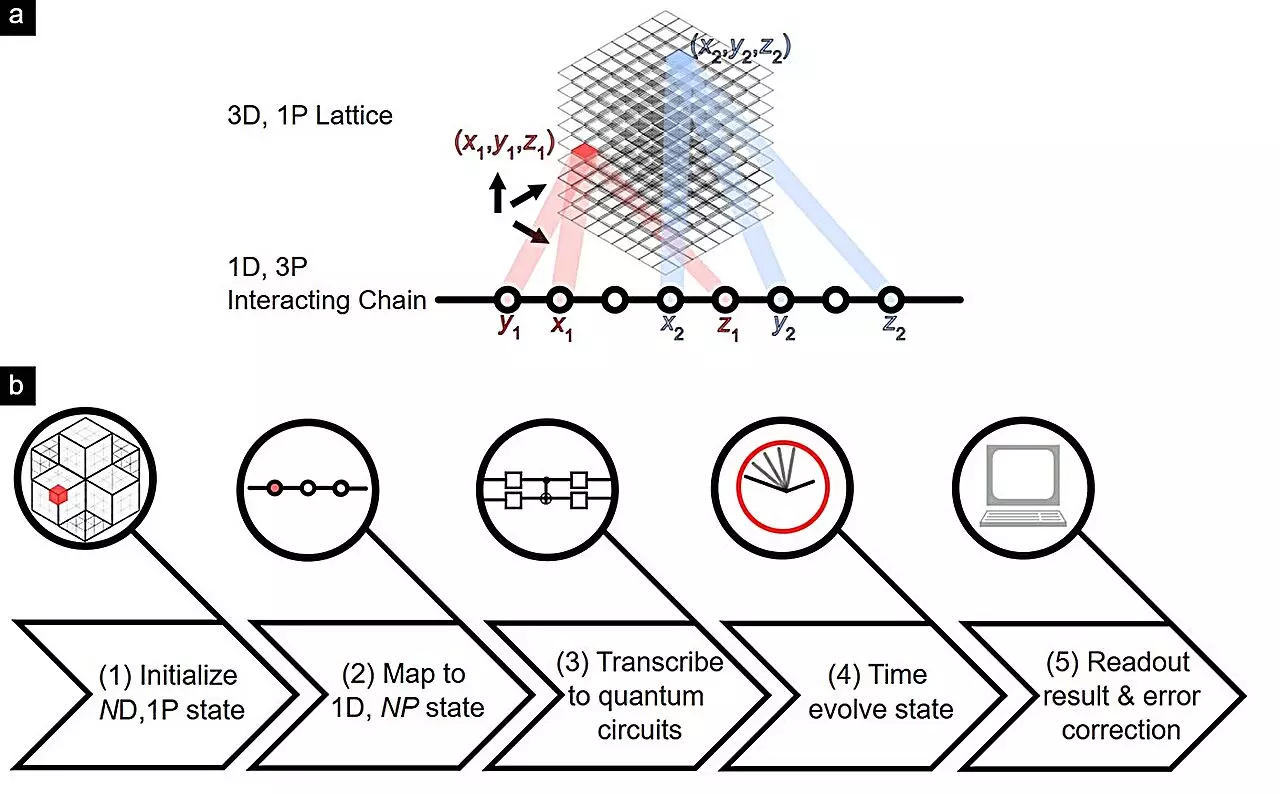In a groundbreaking study conducted by researchers at the National University of Singapore (NUS), higher-order topological (HOT) lattices have been successfully simulated with unprecedented accuracy using digital quantum computers. These complex lattice structures play a crucial role in understanding advanced quantum materials that possess robust quantum states, which are highly sought after in various technological applications.
The Significance of Topological States
The study of topological states of matter, along with their HOT counterparts, has garnered significant attention from physicists and engineers alike. The discovery of topological insulators has revolutionized the field, as these materials conduct electricity solely on their surfaces or edges, while the interiors remain insulating. This unique property, stemming from the mathematical principles of topology, allows electrons to flow along the edges without being hindered by defects or deformations in the material.
Led by NUS Assistant Professor Lee Ching Hua, the research team has developed a scalable approach to encoding large, high-dimensional HOT lattices into simple spin chains present in current digital quantum computers utilizing many-body quantum interactions. This innovative approach takes advantage of the vast information storage capacity of quantum computer qubits while minimizing resource requirements in a noise-resistant manner.
The findings of this research, recently published in the journal Nature Communications, mark a significant advancement in the field of quantum computing. By utilizing error mitigation techniques developed in-house, the team was able to measure topological state dynamics and protected mid-gap spectra of HOT lattices with unparalleled accuracy, despite the limitations of current noisy intermediate-scale quantum devices.
Exploring Quantum Advantage
Professor Lee emphasized the importance of finding new applications for which quantum computers can provide unique advantages, beyond highly-specific tailored problems. The team’s approach allows for the exploration of intricate signatures of topological materials on quantum computers with a level of precision previously unattainable, even for hypothetical materials in four dimensions.
The Potential of Quantum Technology
The ability to simulate high-dimensional HOT lattices opens up new research avenues in quantum materials and topological states, suggesting a promising path towards achieving true quantum advantage in the future. This development showcases the potential of current quantum technology to explore new frontiers in material engineering, paving the way for innovative technological advancements in various industries.


Leave a Reply